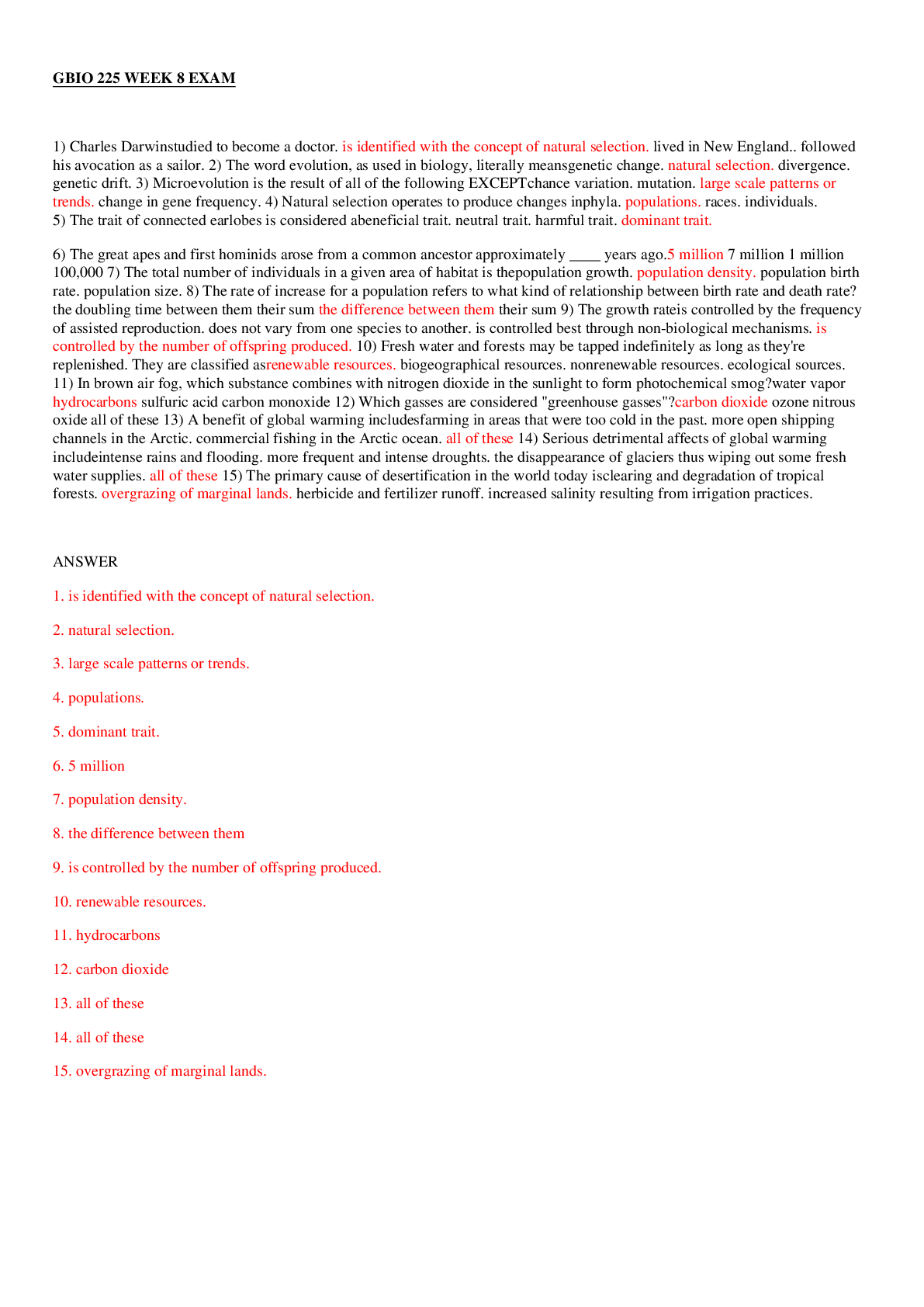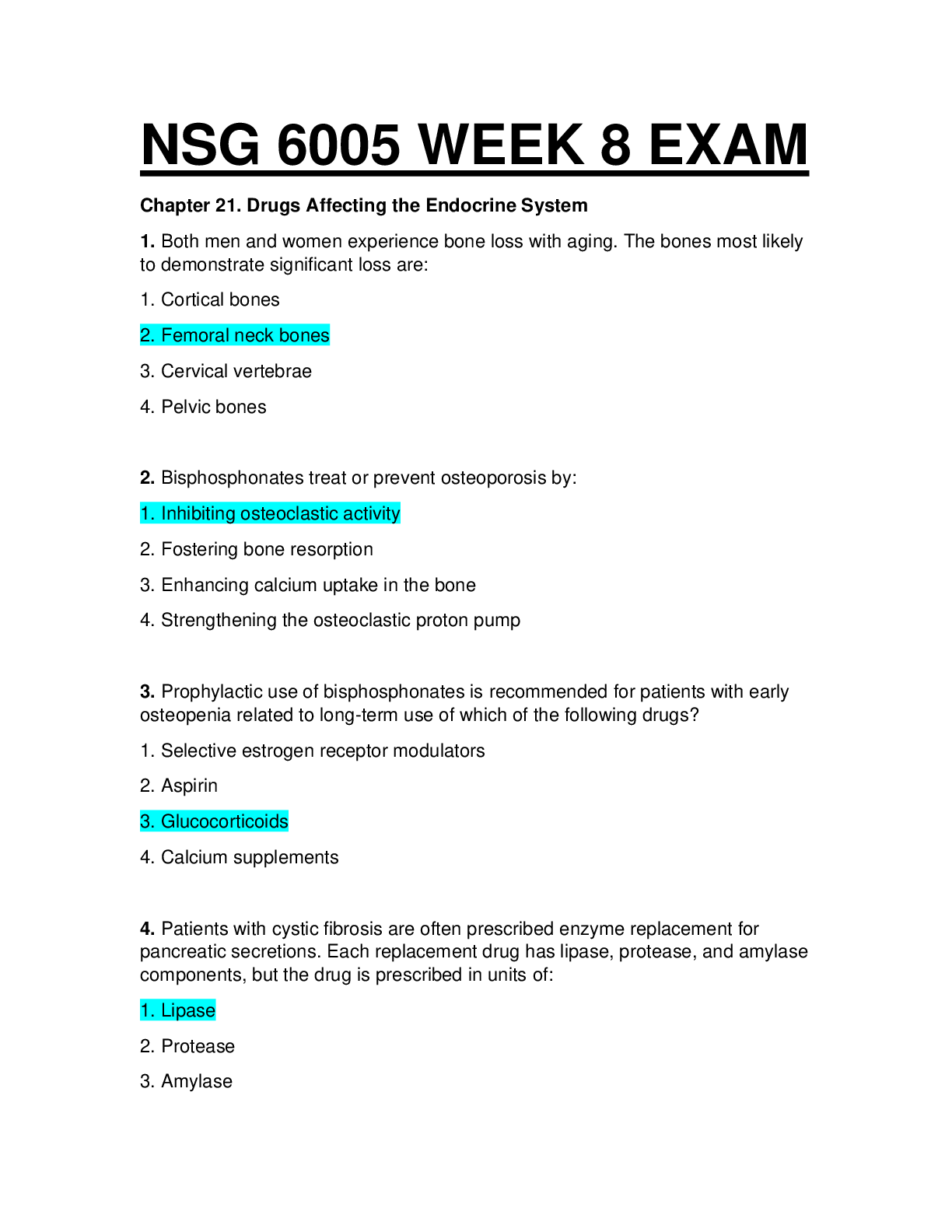*NURSING > EXAM > Portage Learning; MED Nursing Fundamentals Week 8 Exam and Summary/Definition in this one Document ( (All)
Portage Learning; MED Nursing Fundamentals Week 8 Exam and Summary/Definition in this one Document (Latest)
Document Content and Description Below
Portage Learning; MED Nursing Fundamentals Week 8 Exam and Summary/Definition in this one Document (Latest) A nurse researcher studies the effectiveness of a new program designed to educate parents... to promote the immunization of children. The nurse divides the parents randomly into two groups. One group receives the typical educational program and the other group receives the new program. This is an example of which type of study? 1. Historical 2. Qualitative 3. Correlational 4. Experimental A nurse who works on a pediatric unit asks, "I wonder if children who interact with therapy dogs have reduced anxiety when they are in the hospital." In this example of a PICOT question, which of the following is the O? 1. Children 2. Therapy dogs 3. The pediatric unit 4. Anxiety A nurse researcher wants to know which factors are associated with a person's decision to exercise. The nurse distributes a survey to people who recently joined an exercise wellness program and analyzes the data to determine which factors and characteristics are most significantly linked to the decision to start exercising. Which type of a research study is this? 1. Qualitative 2. Descriptive 3. Correlational 4. Randomized controlled trial A group of nurses have identified that the elderly patients on their unit have a high incidence of pressure ulcers after they have a stroke. During a unit meeting they discuss different interventions that they think may reduce the development of pressure ulcers. What is the nurses' next step to investigate this clinical problem further? 1. Conduct a literature review 2. Share the findings with others 3. Conduct a statistical analysis 4. Create a well-defined PICOT question Arrange the following steps of evidence-based practice (EBP) in the appropriate order. 1. Integrate the evidence. 2. Ask the burning clinical question. 3. Create a spirit of inquiry. 4. Evaluate the practice decision or change. 5. Share the results with others. 6. Critically evaluate the evidence you gather. 7. Collect the most relevant and best evidence. When recruiting subjects to participate in a study about the effects of an educational program to help patients at home take their medications as ordered, the researcher tells the subjects that their names will not be used and no one but the research team will have access to their information and responses. This is an example of: 1. Bias. 2. Anonymity. 3. Confidentiality. 4. Informed consent. Nurses in a community clinic have seen an increase in the numbers of obese children. The nurses who care for children are discussing ways to reduce childhood obesity. One nurse asks a colleague, "I wonder what the most effective ways are to help school-age children maintain a healthy weight?" This question is an example of a/an: 1. Hypothesis. 2. PICOT question. 3. Problem-focused trigger. 4. Knowledge-focused trigger. The nurses on a medical unit have seen an increase in the number of medication errors on their unit. They decide to evaluate the medication administration process on the basis of data gained from chart reviews and direct observation of nurses administering medications. Which process are the nurses using? 1. Evidence-based practice 2. Research 3. Quality improvement 4. Problem identification A nursing student is preparing to read the methods section of a research article. Which type of information will the student expect to find in this section? (Select all that apply.) 1. How the researcher conducted the study 2. A description about how to use the findings of the study 3. The number and type of subjects who participated in the study 4. Summaries of other research articles that support the need for this study 5. Implications for future research studies A group of nurses on the research council of a local hospital are measuring nursing-sensitive outcomes. Which of the following is a nursing-sensitive outcome that the nurses need to consider measuring? (Select all that apply.) 1. Frequency of low blood sugar episodes in children at a local school 2. Number of patients who develop a urinary tract infection from a Foley catheter 3. Number of patients who fall and experience subsequent injury on the evening shift 4. Number of sexually active adolescent girls who attend the community-based clinic for birth control 5. Patient-reported quality of life following coronary artery bypass graft surgery and cardiac rehabilitation Which of the following statements about evidence-based practice (EBP) made by a nursing student would require the nursing professor to correct the student's understanding? 1. "In evidence-based practice the patients are the subjects." 2. "It is important to talk with experts and patients when making an evidence-based decision." 3. "A nurse wanting to investigate the evidence to solve a problem starts by forming a PICOT question." 4. "It is important to ask a librarian for help when searching for literature to help you answer your PICOT question." A nurse is reading a research article. The nurse just finished reading a brief summary of the research study that included the purpose of the study and its implications for nursing practice. Which part of the article did the nurse just read? 1. Abstract 2. Analysis 3. Discussion 4. Literature review A researcher is studying the effectiveness of an individualized evidence-based teaching plan on young women's intention to wear sunscreen to prevent skin cancer. In this study which of the following research terms best describes the individualized evidence-based teaching plan? 1. Sample 2. Intervention 3. Survey 4. Results Summary/Definition(Sample) Postvoid Residual (PVR) ----The amount of urine left in the bladder after voiding and is measured either by ultrasound or straight catheterization Pyelonephritis ----Inflammation of the substance of the kidney as a result of bacterial infection. Renin ----Proteolytic enzyme produced by and stored in the juxtaglomerular apparatus that surrounds each arteriole as it enters a glomerulus. The enzyme affects the blood pressure by catalyzing the change of angiotensinogen to angiotensin, a strong repressor Suprapubic Catheter ----Catheter surgically inserted through abdomen into bladder Urinary Incontinence (UI) ----Inability to control urination Urinary Retention ----Retention of urine in the bladder; condition frequently caused by a temporary loss of muscle function Ureterostomy ----Diversion of urine away from a diseased or defective bladder through an artificial opening in the skin [Show More]
Last updated: 1 year ago
Preview 1 out of 24 pages
Instant download
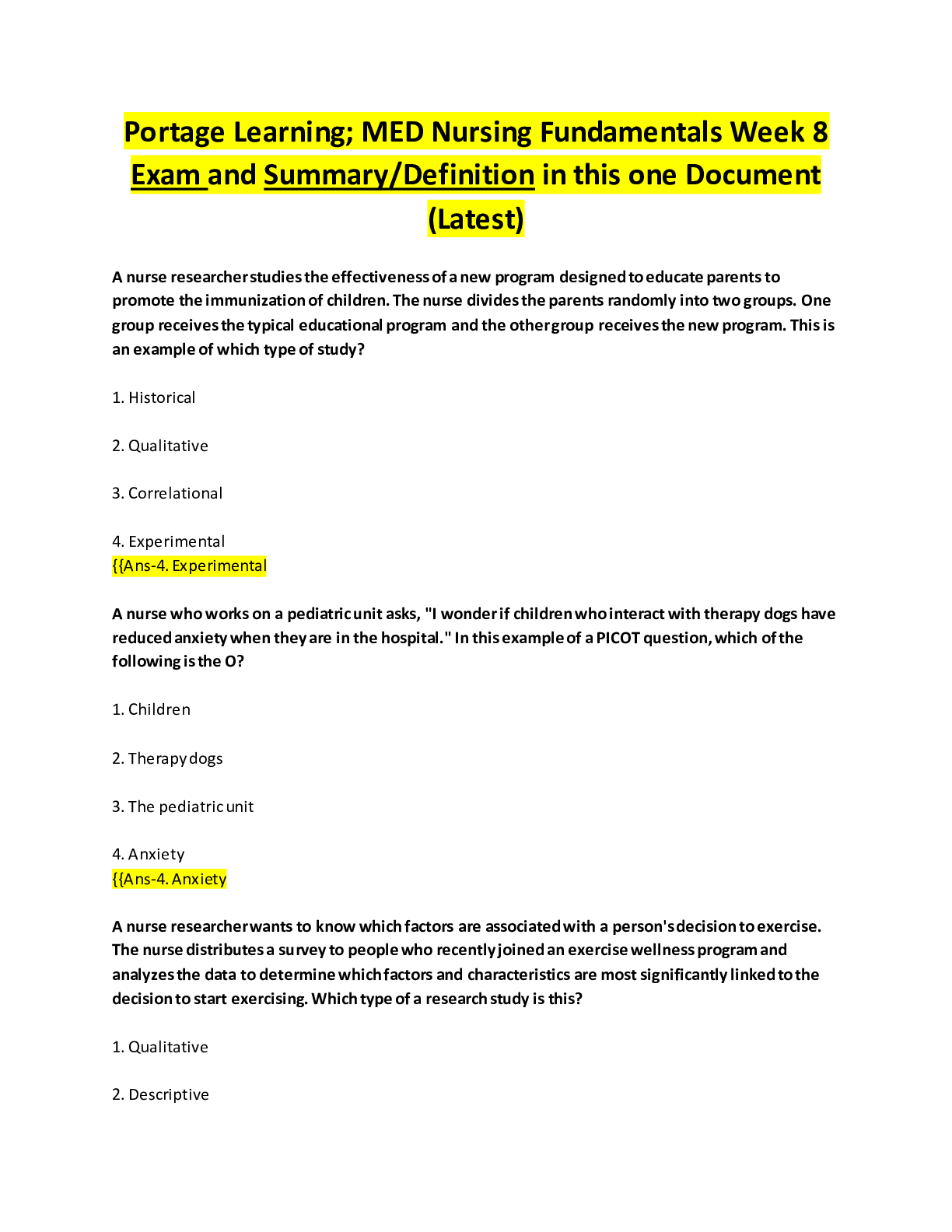
Buy this document to get the full access instantly
Instant Download Access after purchase
Add to cartInstant download
Reviews( 0 )
Document information
Connected school, study & course
About the document
Uploaded On
Jun 15, 2022
Number of pages
24
Written in
Additional information
This document has been written for:
Uploaded
Jun 15, 2022
Downloads
0
Views
34

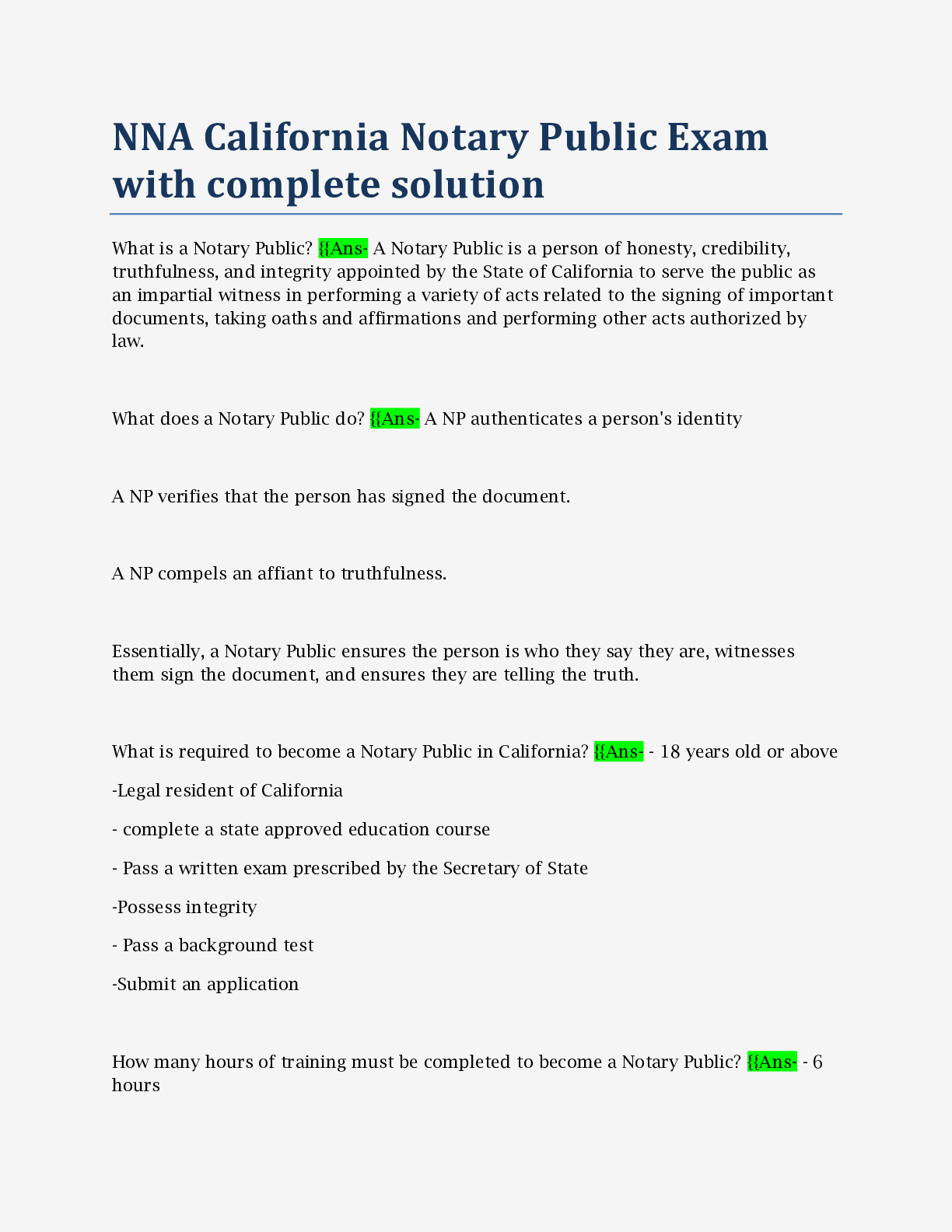
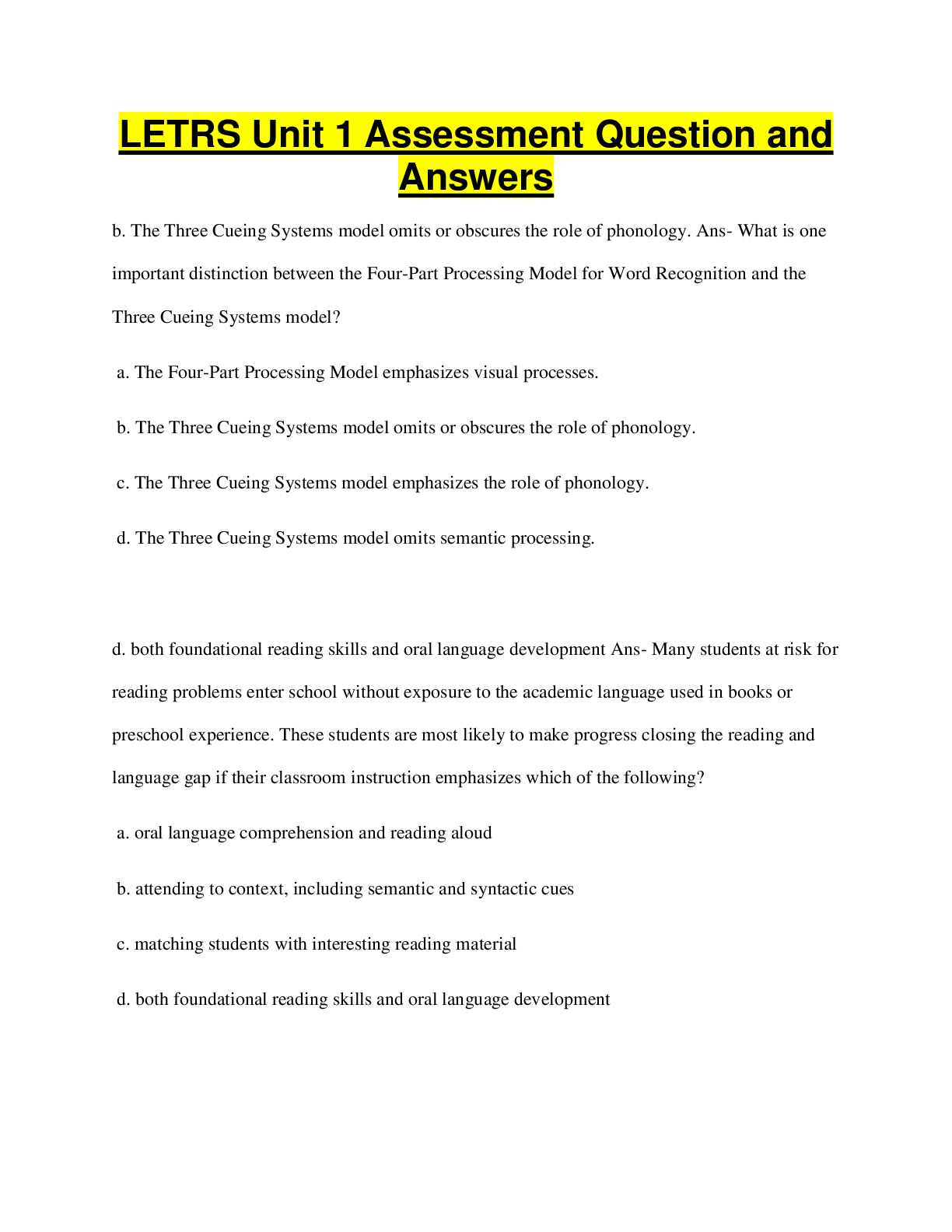
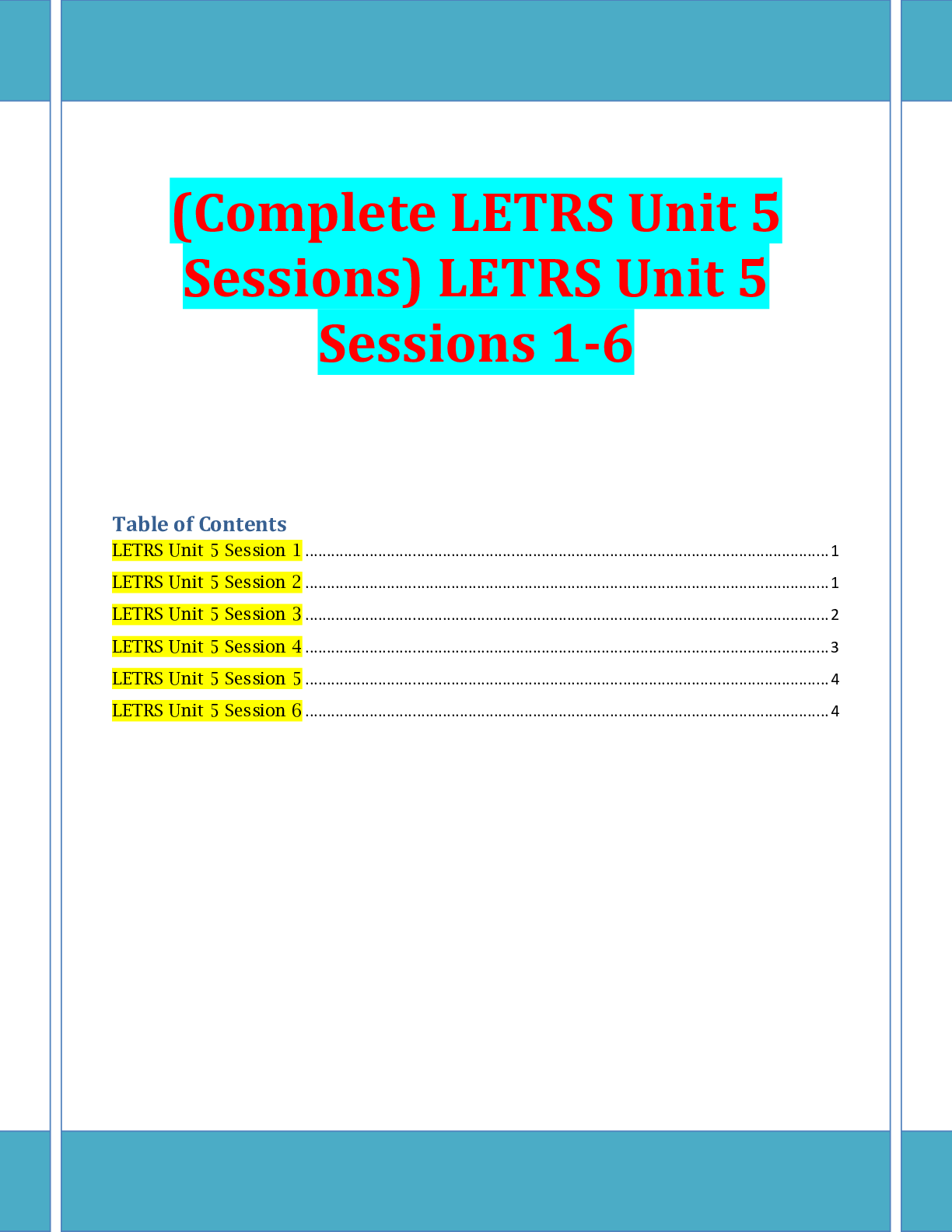
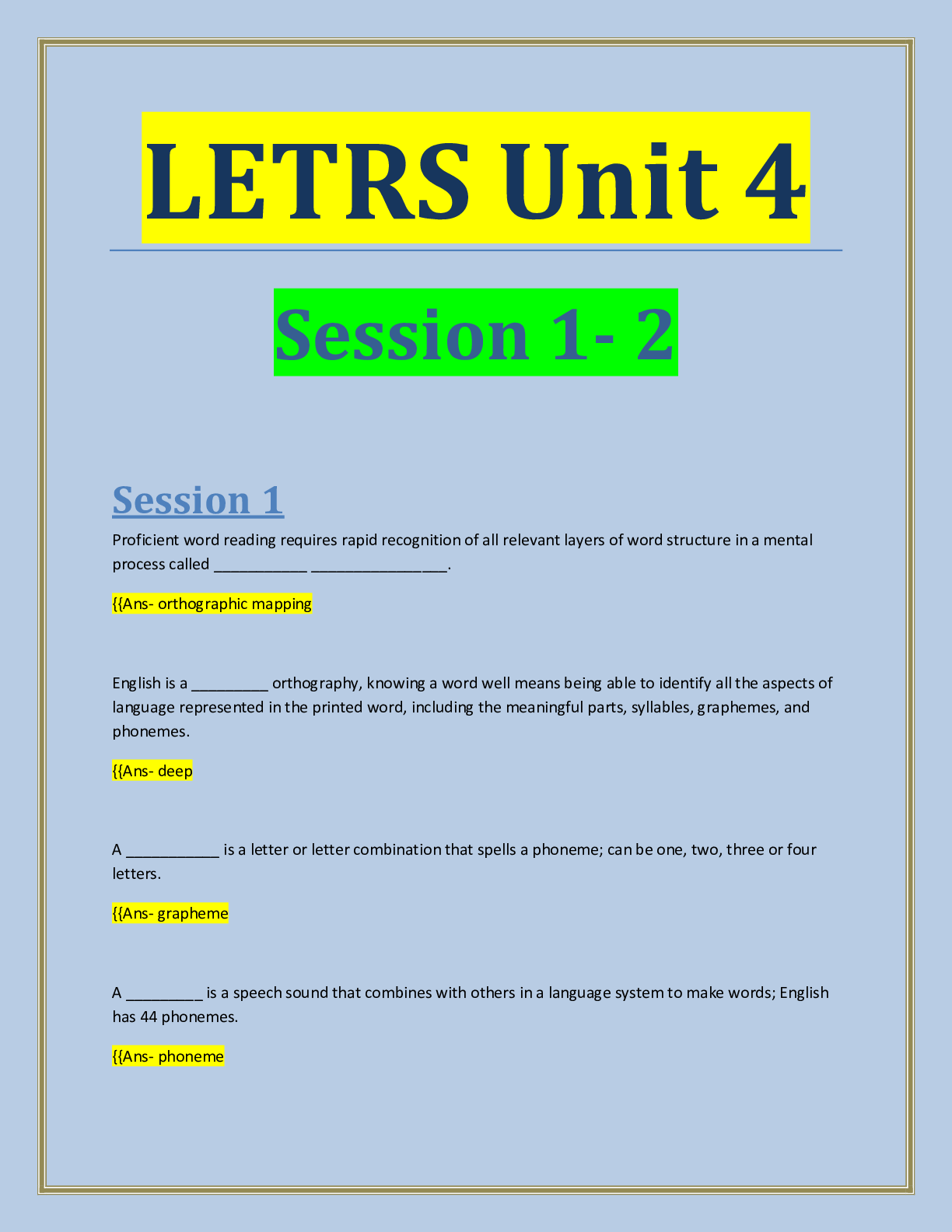
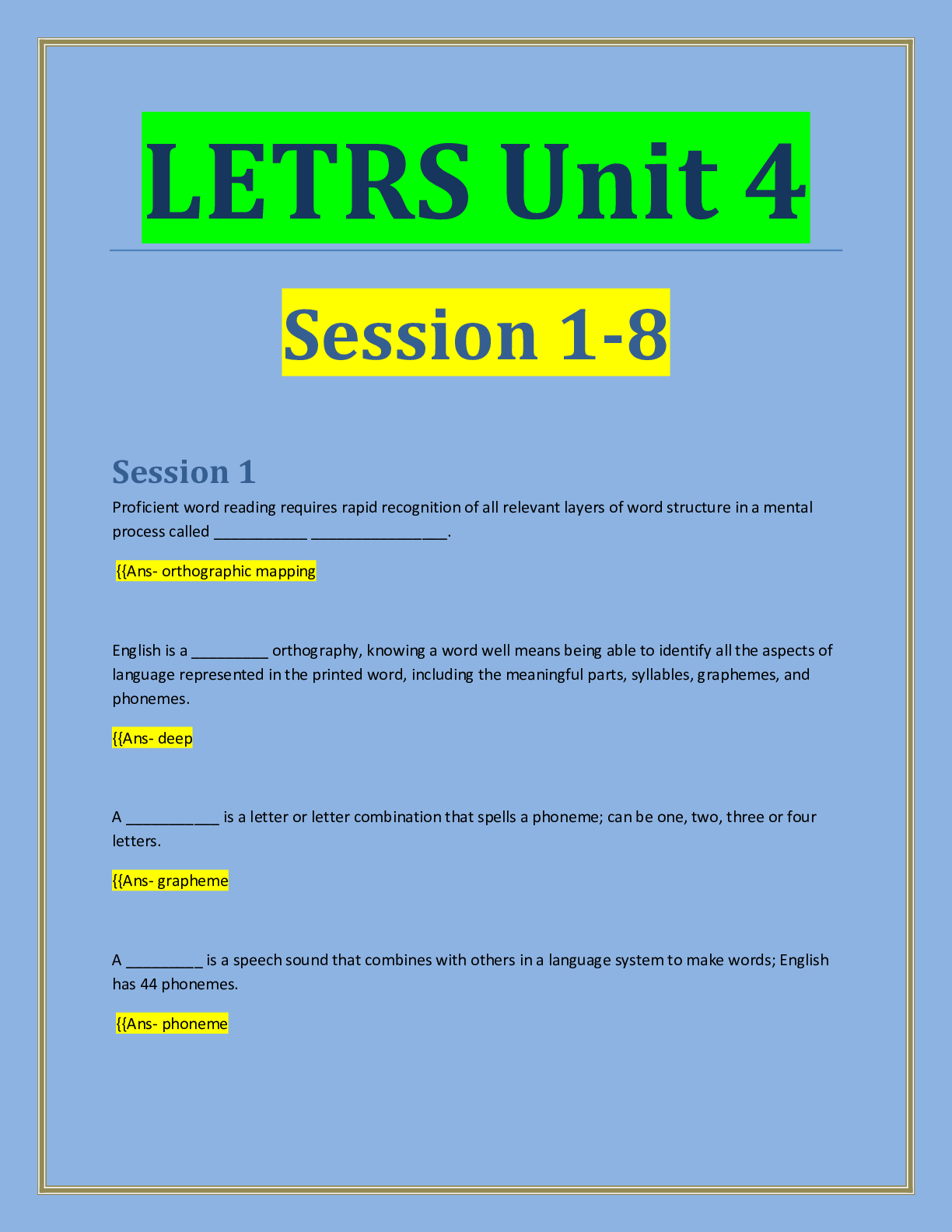

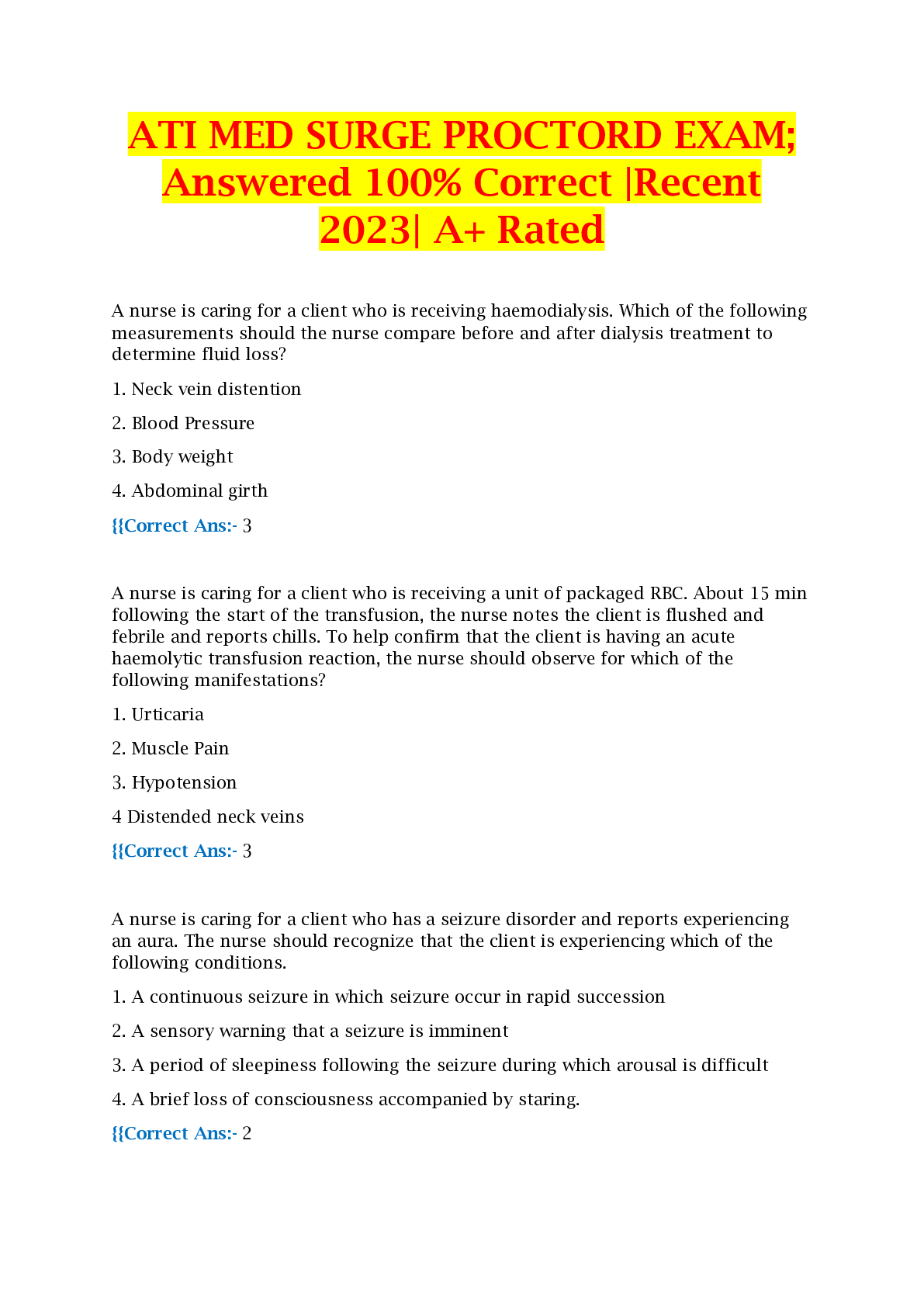


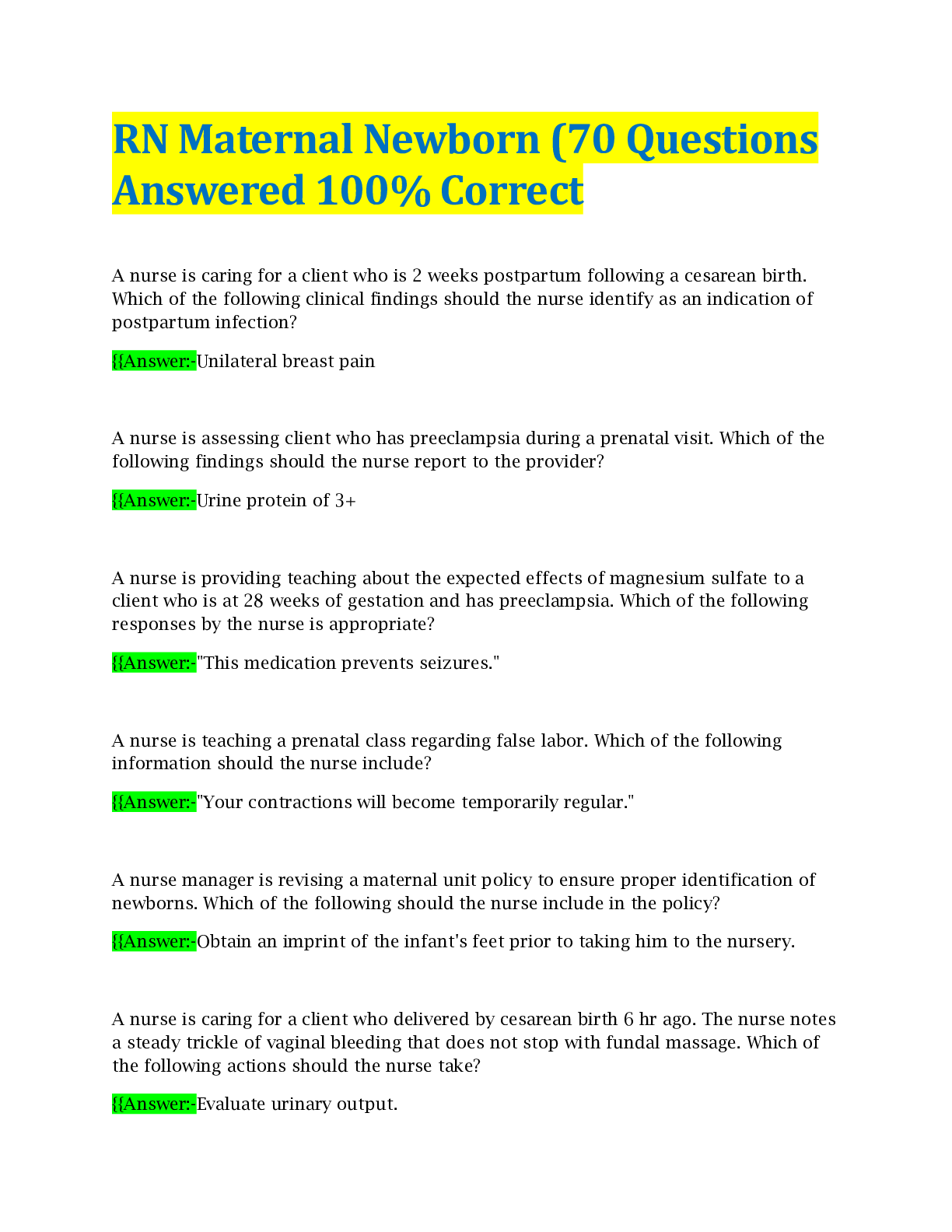
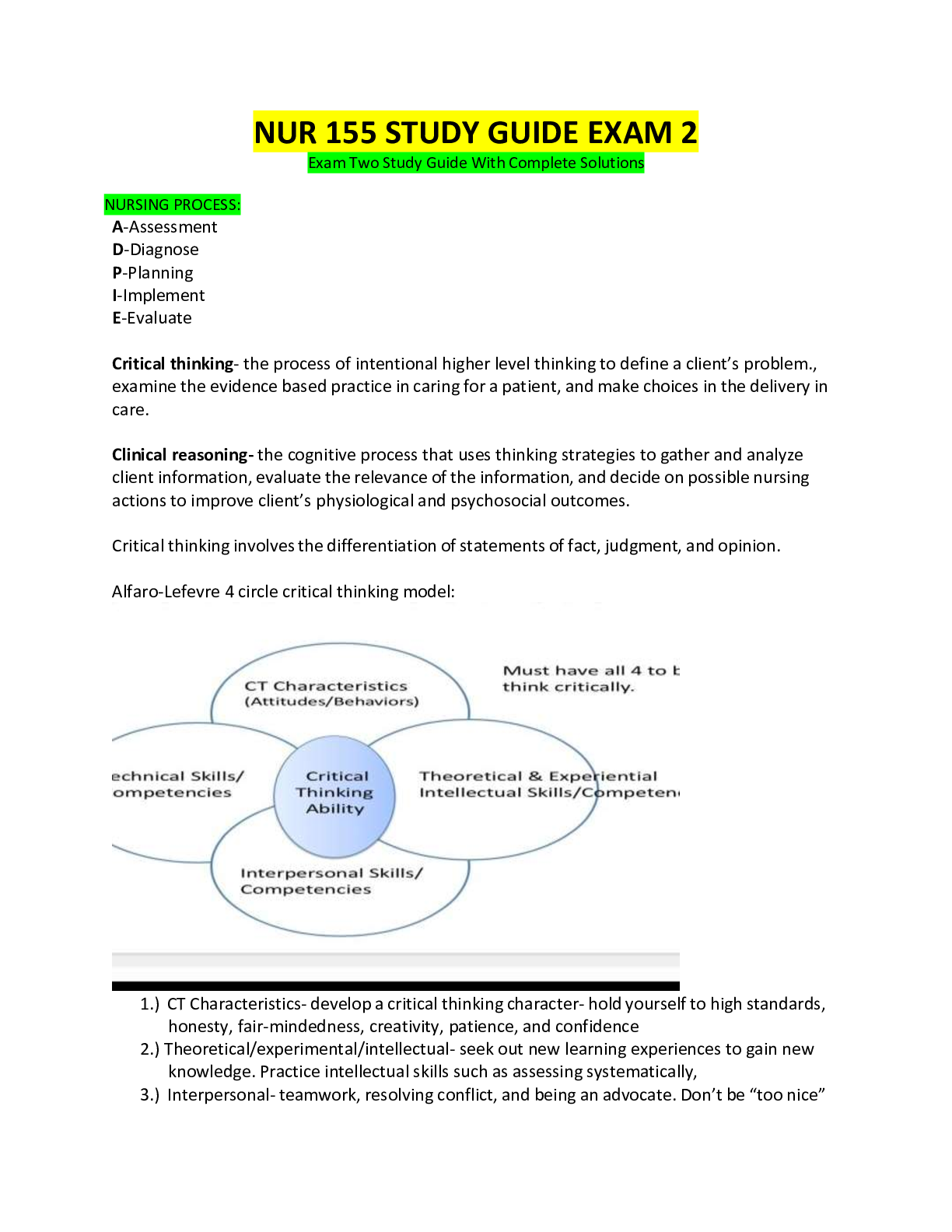
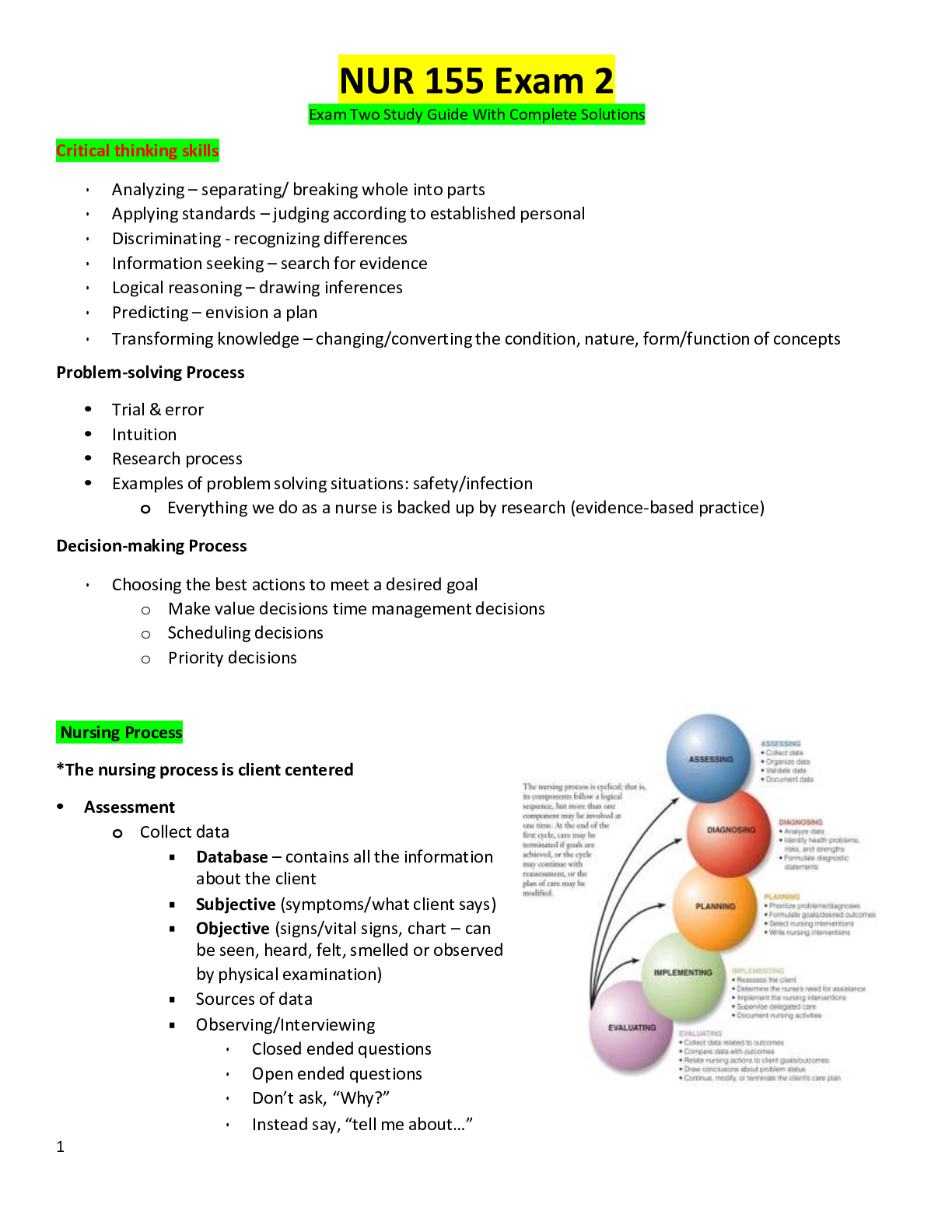
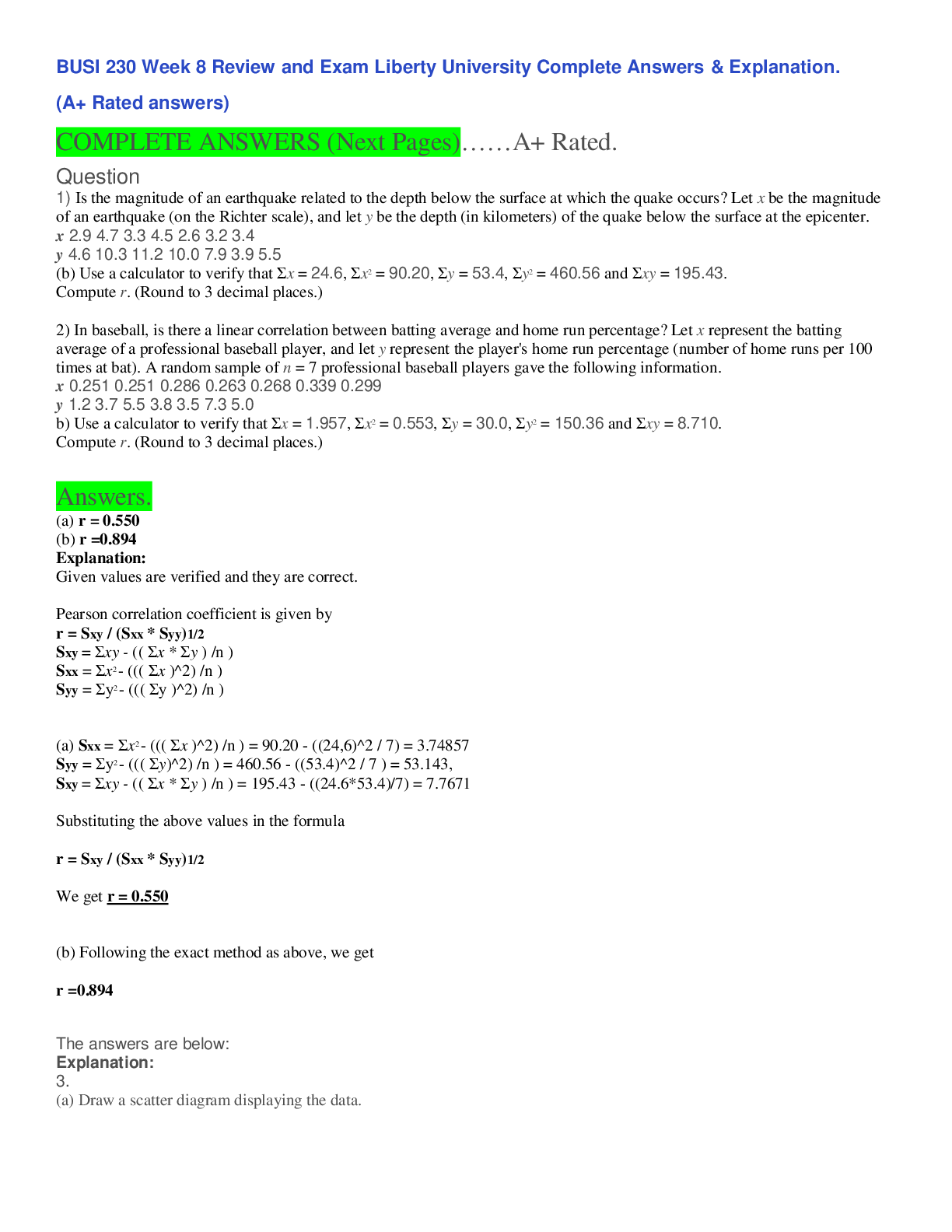

.png)
.png)
.png)

